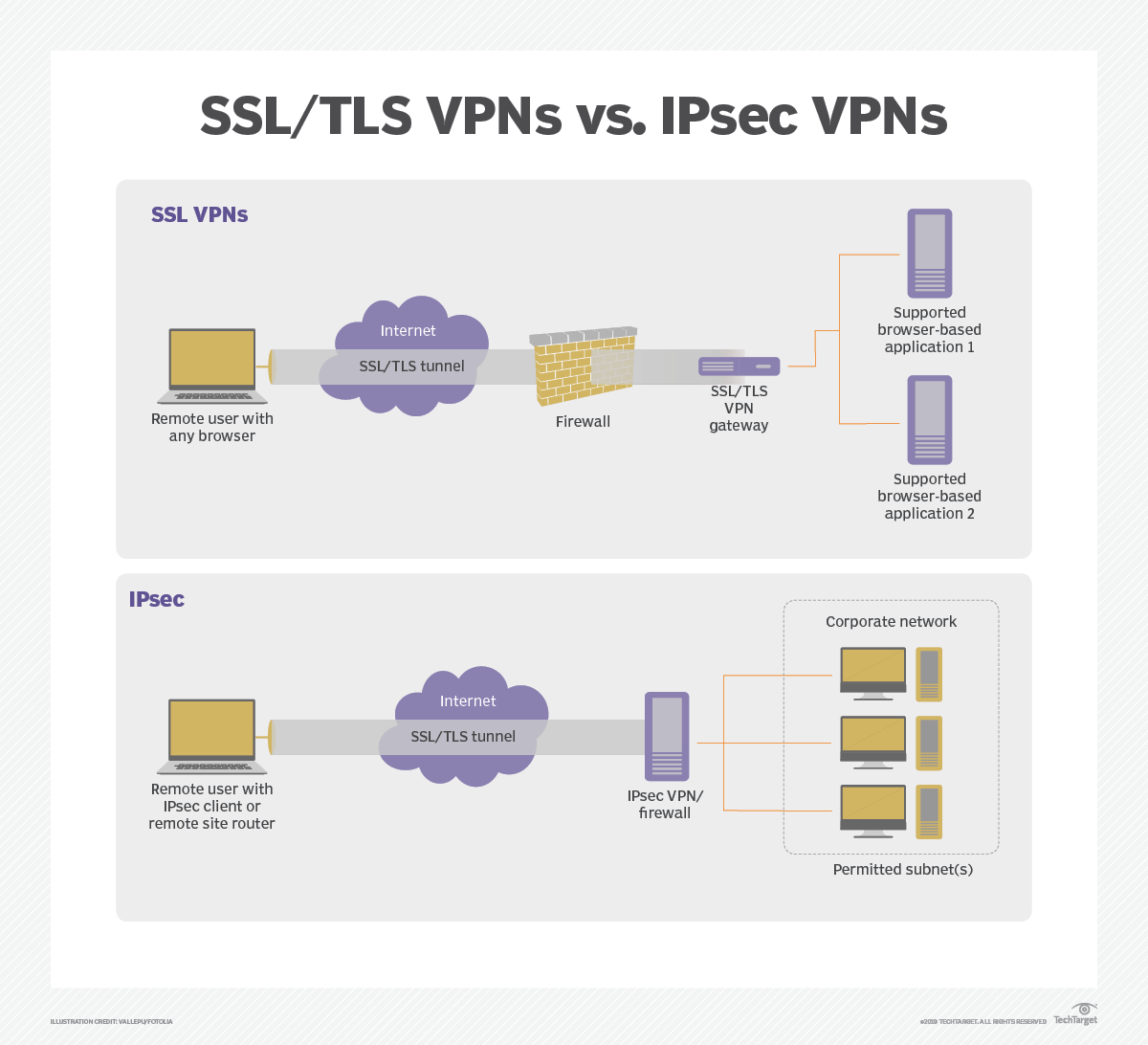IPsec VPNs vs. SSL VPNs

Source: Choosing between an SSL/TLS VPN vs. IPsec VPN
IPsec is a set of protocols that encrypt and secure data transmitted over public networks, primarily operating at the network layer of the OSI model. It's commonly used to establish Virtual Private Networks (VPNs) for secure data transmission. IPsec requires installing dedicated VPN software and offers full network access to all users connected.
SSL/TLS, on the other hand, encrypts HTTP traffic and operates at the application layer of the OSI model. It's commonly used for securing web connections and is associated with websites using "https://" URLs. SSL/TLS can also be used in VPNs, allowing secure browsing and minimal setup, but it may not protect non-browser internet activity.
Key differences between IPsec VPNs and SSL VPNs include their OSI model layers of operation, ease of implementation, access control, and compatibility with on-premise vs. cloud-based applications:
- OSI Model Layer: IPsec functions at the network layer, encrypting IP packets directly. SSL operates at the application layer, encrypting HTTP traffic.
- Implementation: IPsec VPNs require dedicated software installation and user configuration, whereas SSL VPNs are readily supported by web browsers, making them more user-friendly.
- Access Control: IPsec VPNs provide full network access to all connected users, necessitating the setup of multiple VPNs for different access levels. SSL VPNs allow more granular access control on an application-by-application basis.
- On-Premise vs. Cloud Applications: IPsec VPNs work well with on-premise applications, accessed over internal networks. SSL VPNs integrate more easily with cloud-based applications but may require additional setup for on-premise applications.
In summary, IPsec is suitable for securing full network access in an organization, while SSL/TLS is ideal for securing web connections and offering more user-friendly, granular access control, especially for cloud-based applications.